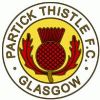|
ESL Forum:
Techniques and methods
in Language Teaching
Games, activities
and teaching ideas
Grammar and
Linguistics
Teaching material
Concerning
worksheets
Concerning
powerpoints
Concerning online
exercises
Make suggestions,
report errors
Ask for help
Message board
|
ESL forum >
Techniques and methods in Language Teaching > There is, There are
There is, There are
|

HOLYMARY_852

|
There is, There are
|
|
We usually use the phrases �There is � or �There are � in the beginning of sentences. But what do we call this in English Grammar. How to explain this to students?
|
18 Jul 2009
|
|
|
|

anitarobi

|
I usually tell them this is how you start a sentence to describe a place, picture or situation, to show what is situated there or part of sth.
edit: sorry, I see you meant the name for it. My high school English teacher called it the descriptive sentence introduction, though I don´t remember anyone ever telling us (even at university) the official name for it. You make an interesting point. Though I´m not big on names - ´A rose, by any other name, would smell as sweet.´  |
18 Jul 2009
|
|
|
|
|

meteorit91

|
There is ,There are are constructions we use when we want to say the location of an object/objects or a person,an animal ...and we use the prepositions of place.eg. There is a dog under the bed.
It - is an impersonal pronoun when we talk about weather ,e.g. It snows. It is cold.
|
18 Jul 2009
|
|
|

almaz

|
According to David Crystal, when we want to bring the content of a whole clause to the attention of the reader/listener, we can use a construction where the first few words have no meaning and so don �t detract from the important information of the clause. The principal means is to use there is/ there are. This is known as an �empty theme � (sometimes �dummy theme �) or the �existential there �. eg There are lots of fairies at the bottom of my garden.
Shouldn �t be confused with there as an adverb of place ( THERE they are! Over there!)
So, �empty � or �dummy � theme, anyone? |
18 Jul 2009
|
|
|

HOLYMARY_852

|
|
Thanks everyone for the clarification.
|
18 Jul 2009
|
|
|

ballycastle1

|
|
Parrott calls them �dummy subjects �, while Swan simply refers to �a kind of preparatory subject �. |
18 Jul 2009
|
|
|